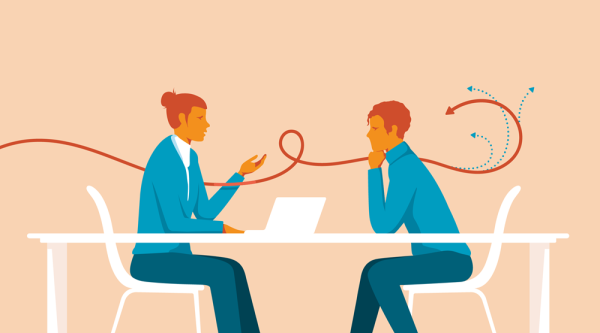By Sajeeb Sarker
Active Listening
Media School May 16, 2024

Active listening requires undivided attention and interest in the conversation. Symbolic image.
Listening to the speaker while communicating is a must to make a conversation fruitful. But, listening can take different forms. When people communicate, level of their attention in the communication process may vary. Sometimes, a person can be really very focused and active in listening to what others are saying. In this instance, the listener is active, focused and deliberate and thus able to understand what the speaker is saying. This is an example of active listening.
On the other hand, a person can just be in the conversation without giving any attention or focus to what the speaker is trying to convey. This type of listening is just ‘listening’, and it is usually called 'passive listening'. In this type of conversation, the listener is highly likely to fail in understanding the speaker or the person they are communicating with.
Now, let’s define active listening in a more structured way.
Active listening can be defined as a focused and deliberate listening approach where the listener is fully engaged and involved in the communication process.
So, we can say that active listening is just the opposite of passive listening and vice versa.
How to become an Active Listener
It requires a few skills, or qualities to become an active listener. Such qualities can include the ability to focus and concentrate during a conversation. Being able to pay undivided attention to the person you are communicating with is a must. Also, having an interest in the communication process as a whole is important as well. You will not be able to focus on the message of the speaker and understand it if you do not have any interest in it.
Active listening also requires an ability to identify and understand the non-verbal cues (e.g. body language and facial expressions) in a conversation. Paying attention only to the words will not suffice all the time because people can be vague, unable or unwilling to express their real thoughts or feelings through the words they utter. In such cases, you must utilize your skills to understand the non-verbal cues people usually provide without even understanding that they are doing so.
Active listening also includes the quality of willingness in providing feedback. With timely and appropriate feedback, you can clarify yourself to the speaker, and ask relevant questions to ensure that you understand each other. By using feedback, you can also demonstrate that you are interested, focused and fully involved in the conversation.
Now, let’s summarize the things you need to ensure to become an active listener:
* Be attentive and pay your undivided attention to the speaker.
* Let the speaker know that you are listening.
* Acknowledge the message and try to understand it.
* Provide feedback explaining your viewpoint, but don’t be judgmental.
* Request clarification – if necessary.
* Ask questions to make the conversation much more active and interesting. You can also ask questions for clarification of any information used, or to understand the conversation clearly. Using open-ended and probing questions is often a good technique.
* Respond appropriately and with respect.
* Finally, paraphrase what you have understood throughout the conversation.
Importance of Active Listening
Active listening is important in communication because it helps to avoid conflict and misunderstandings. Thus, it can contribute in building positive relationships. It also helps to keep relationships healthy.
People expect attention and respect while communicating. They want to be listened to. These also make active listening so important in the communication process.


